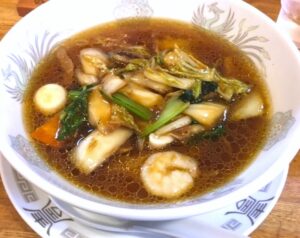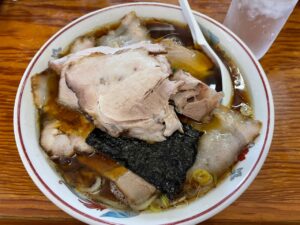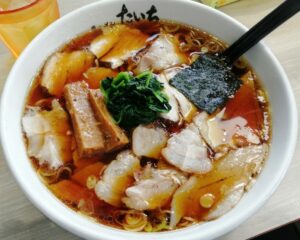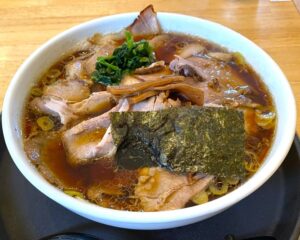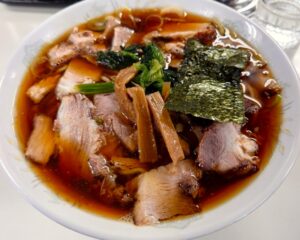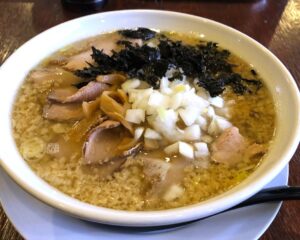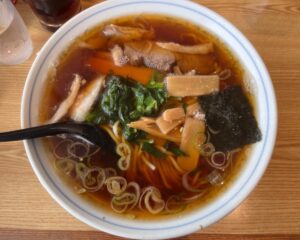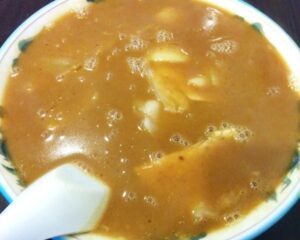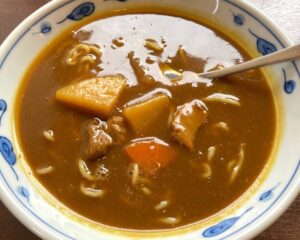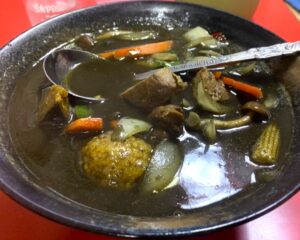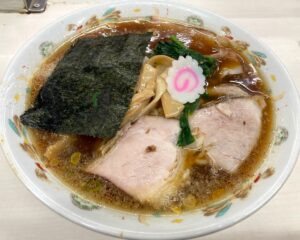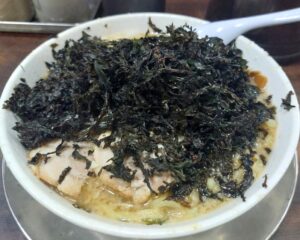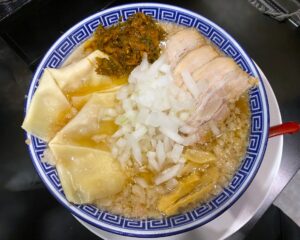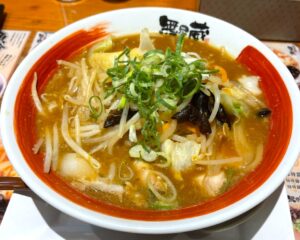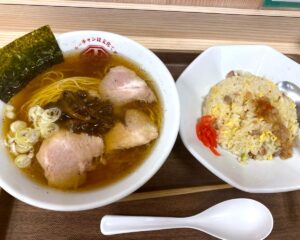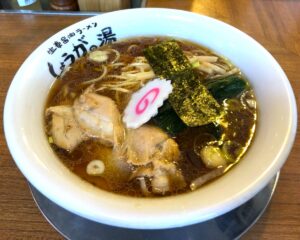Niigata Ramen (Niigata Pref.)
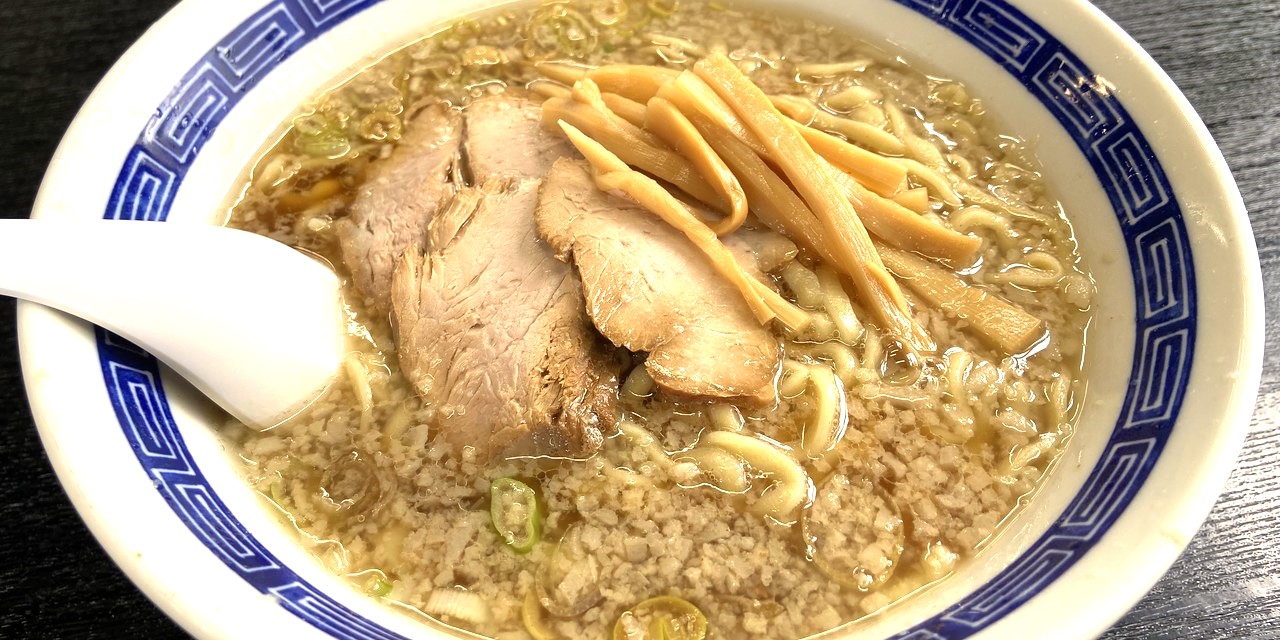
What is Niigata Ramen(新潟ラーメン)?
Niigata’s five local spot ramen are collectively called Niigata’s five major ramen(新潟5大ラーメン). It refers to “Niigata light soy sauce ramen(新潟あっさり醤油ラーメン)”, “Niigata rich miso ramen(新潟濃厚味噌ラーメン)”, “Tsubame Sanjo back fat ramen(燕三条背脂ラーメン)”, “Sanjo curry ramen(三条カレーラーメン)”, and “Nagaoka ginger soy sauce ramen(長岡生姜醤油ラーメン)”.
The dried sardines, back oil, and miso are all excellent.
The term “Niigata ramen(新潟ラーメン)” does not exist. Unfortunately, it has been overlooked as a local ramen area. However, Niigata is the land of ramen that you should never underestimate. This is something I noticed recently when I went out to eat a lot.
Ramen was first introduced to Niigata City in 1927 with the birth of “Hoseiken(保盛軒)”. It has a history of near 100 years, which is older than other local areas. The soup was made with a chicken stock base and seasoned with dried sardines, and this seems to have evolved into the sardine-based soup that is common in Niigata City. It operated in the downtown area of Furumachi as a slightly upscale pure Beijing restaurant, but was moved in 2002 due to its deterioration. Currently operating as a casual Chinese restaurant in a Tokimeki residential area in Nishi Ward.
Another long-established shop specializing in dried sardines is “Sankichi-ya(三吉屋).” A soup with a light soy sauce flavor and a hint of dried sardines. This is common in Niigata City. There is a shop with a similar name called “Shinkichi-ya(信吉屋)” nearby, and I thought it was related, so I asked about it, but it turns out it’s not. But it’s the same dried sardine soup stock. This soup has a slightly clear texture, somewhere between salt and soy sauce. Located in the Honmachi Central Market, this is a shop that you should definitely experience along with the atmosphere of the surrounding area. “Sekimonshi(石門子, closed)” is also a soup flavored with dried sardines. However, it seems like the secret ingredient is shellfish that they harvested themselves, which gives it a deeper flavor.
“Chuka no Kato(中華のカトウ,closed)”, which is famous for being open from 7 a.m., serves soba flavored with bonito and dried sardines. It is an interesting shop that closes in the afternoon when the homemade noodles that have been made since its founding are no longer available. Naruto with shell holes was also rare, but it seems like these days they are no longer used for some reason.
“Tenryu(天龍,closed)” was also one of the long-established sardine-based shops. In the city, new wave shops such as “Marukiya(丸木屋)” (chemical seasoning-free, log house-like interior), “Ozawa(おざわ)” (hemical seasoning-free, old-fashioned interior), and “Basukiya(ばすきや)” (homemade curry is popular) are emerging. However, all of them are dried sardines. Among these dried sardines, the ones that left a strong impression on me are “Raimi(来味)” and “Ajimitsu(味みつ).” These two shops make sure to make one bowl of ramen even if it’s crowded or there’s a long line. It is truly a “one bowl, one spirit”. It’s impressive to watch the ramen being made, but of course the ramen that came out was an amazing masterpiece.
It’s a long story, but what I’ve talked about so far is only one side of Niigata.
Next is the backfat type. There are two types of backfat: the chacha type, which is produced by Tokyo’s “Hopeken(ホープ軒),” and the Masutani type, whose main stream is “Masutani(ますたに)” in Kyoto. There was some debate as to which is the originator, but Niigata has had a back fat type for a longer time than either of those areas.
The originator is “Fukuritei(福来亭,closed)” in Tsubame City founded in the early Showa period(1932). From here you can also find “Koushuu Hanten(杭州飯店)” and “Matsuya Shokudo(まつや食堂)” in Tsubame City, “Chukatei(中華亭)”, “(Sanjo) Fukurai-tei(三条 福来亭,closed)” and “Ikoi Shokudo(いこい食堂)” in neighboring Sanjo City, “Sekiya Fukurai-tei(関屋 福来亭)” in Niigata City, and “Anpuku-tei(安福亭)” and “Jun(潤)”in Nagaoka City, then became a major force in Niigata.
This characteristic is not only the strong back fat, but also a lot of oil. And the homemade noodles are extremely thick, just like Ramen Jiro (ラーメン二郎) in Tokyo. And dried sardines taste acts on that. You might think of it as a mismatched combination of extra-thick noodles, back fat, and dried sardines, but it’s a flavor that has been loved by prefectural residents for 90 years and has continued to spread. Once you try it, you’ll be surprisingly addicted to it. This ramen caters to those who like dried sardines, those who like Jiro, and those who like richness, so I think it has the potential to become popular even if it expands to Tokyo.
Next, there is a ginger-based soup that is similar to “local spot ramen” in the Nagaoka area. I’ve only eaten at Aoshima Shokudo(青島食堂), its representative shop, but it seems that similar flavors are spreading around Nagaoka.
Furthermore, Niigata has a taste that you should not forget. It’s “Miso Ramen”. This is a shop that is particular about miso ramen, even though it is not a miso ramen town. The originator is “Komadori(こまどり)” in Makimachi. Although it is now a large shop with a capacity of nearly 100 people, it is still a popular shop with long lines. After all, there are about 10 different types of miso on the menu. It’s surprising that they don’t just change the toppings, they change the miso, ingredients, and cooking method. What’s more, I was surprised to see that there were four different types of noodles on the same miso menu. What’s more, miso ramen comes with a “dilute soup.” In Tokyo, it’s like tsukemen mixed with hot water. “If the soup is too thick, please dilute it with this,” he says, adding a dashi base soup.
“Toyoko(東横)” in Niigata City, which is a branch of “Komadori,” has rapidly become more popular than its original shop, and has even opened branches. It comes with extra-thick, chewy noodles, a fairly thick miso soup, and a thin soup just like the original. It’s a shop with long lines. Also derived from Komadori is “Toko(東光)” in Toyosaka City. There are many other popular miso shops such as “Kotan(古潭,closed),” “Kinojiya(きのじや),” “Akamichi Shokudo,(赤道食堂,closed)” and “Misoya(味噌や closed),” where you can experience the depth of Niigata ramen.
Ramen-Japan / Examples of Ramen Shops
Examples of the shops that serve Niigata light soy sauce ramen
Ramen was served at food stalls around a moat in Niigata City in the early Showa period (1926-1945).
At food stalls, the heat was weak, so thin noodles were used to boil them quickly, and a soup made with dried sardines and soy sauce was made to go well with the thin noodles.
-
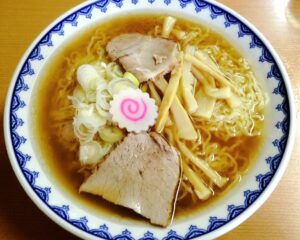
-
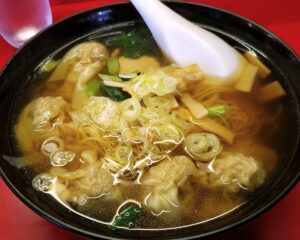
Original ramen Shinkichiya(元祖ラーメン 信吉屋) *Soft, thin noodles in a clear seafood-based soup.
-
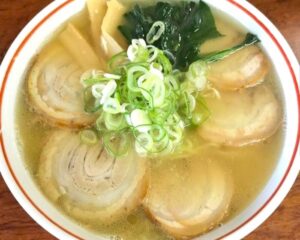
-
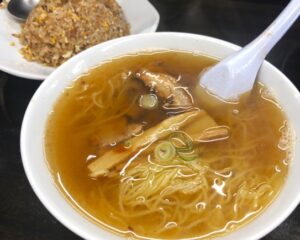
Ajimitsu(味みつ) *Recite the origin of Rachan(ramen+chahan). Published in Michelin Guide Niigata 2020.
-
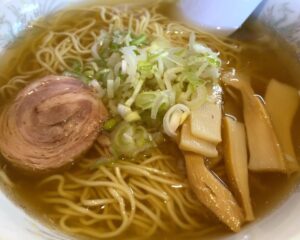
Horaiken(蓬来軒) *Founded in 1956. Noodles with low-hydration, soft taste of seafood soup stock.
-
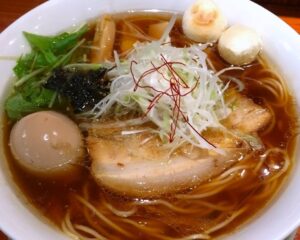
-
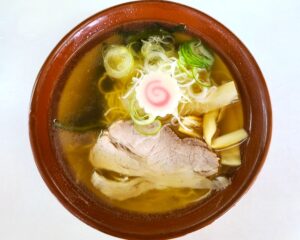
-
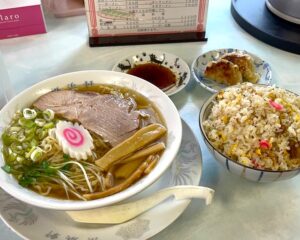
Yokohamaken(横浜軒) *Here also asserts that the orijinator of Rachan; Ramen + fried rice set.
-
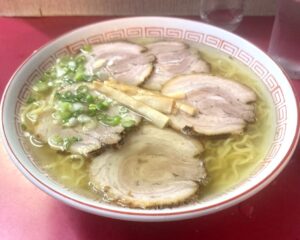
Examples of the shops that serve Tsubame Sanjo backfat ramen
Demand for delivery ramen was high in an area where the metal processing industry is thriving. There is a theory that the noodles were made thicker not to be soggy and limp, and sprinkled with backfat and covered with a lid to maintain the temperature so, that they would be as hot and delicious as possible.
-
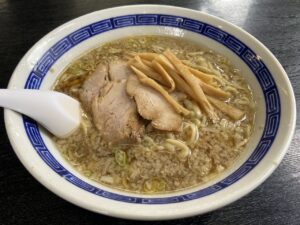
Sekiya Fukuritei(関屋 福来亭) *Uses medium-thin, flat, curly low-hydration noodles . Clean.
-
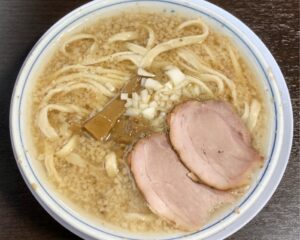
Koushuu Hanten(杭州飯店) *Founded in 1933. Sardines + domestic pork dashi soup. Extra thick noodles.
-
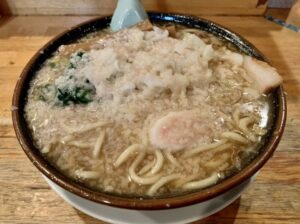
-
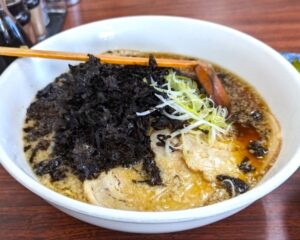
-
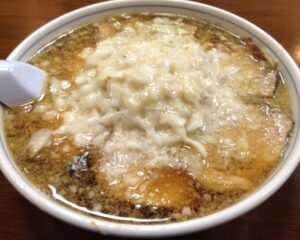
Chukatei(中華亭) *Extra thick flat noodles. Menma yakisoba is also a specialty.
-
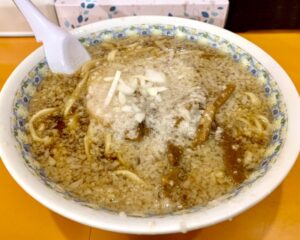
Ikoi Shokudo(いこい食堂) *The shop with a lineage of Fukuritei, the founder of back fat sardine ramen.
-
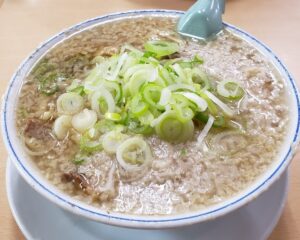
-
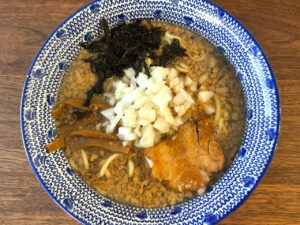
-
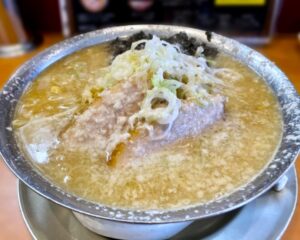
Examples of the shops that serve Nagaoka ginger soy sauce ramen
There are theories that the reason why people started adding ginger to soup was to “get rid of the smell of pork” and “to warm the body.”
Examples of shops that serve Niigata rich miso ramen
“Komadori” uses an unusual style of eating by adding a separate soup and adjusting the intensity of the flavor.
-
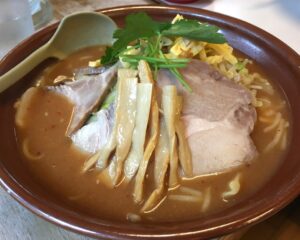
Ramen Komadori(ラーメン こまどり) *A typical rich miso ramen shop and originator.
-
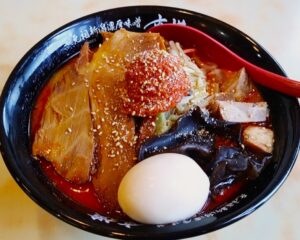
-
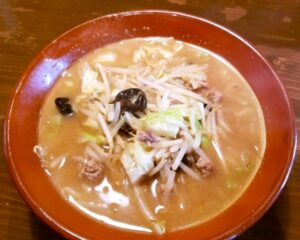
-
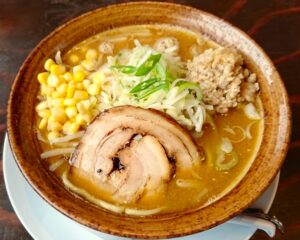
Fujino Higashi Nakanoyama Shop(ふじの 東中野山店) *Red miso + white miso + seafood soup stock.
-
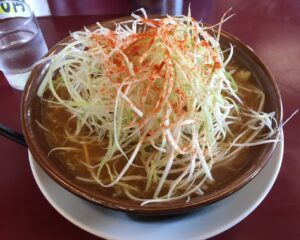
Ramen Party Hisago(らーめん党 ひさご) *Heavy green onion miso ramen.
-
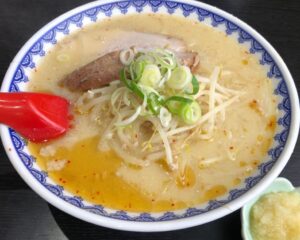
Examples of the shops that serve Sanjo curry ramen
Sanjo Curry Ramen, which has a history of over 80 years, has its roots in a Western restaurant in Tokyo before World War II. A craftsman who learned the British style of making curry roux combined it with ramen at a local restaurant in Sanjo, and it is said to be “Sanjo Curry Ramen.” It is said that it became popular during the period of high economic growth (around 1955-1973) as a delivery ramen dish among the busy craftsmen of the thriving hardware industry in Sanjo City.
The idea of the curry paste acting as a lid to maintain the temperature is the same as that of the neighboring Tsubame back fat Ramen.

